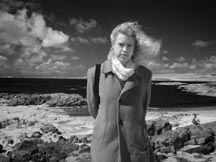
Syllabus
Digital Photography
Albertus Magnus College
Jerry Nevins, Professor
Contact Me
Spring Semester, 2014
Class Blog, Spring Semester 2012
Class Blog, Summer 2012
Class
Blog, Spring 2010
Class
Blog Spring 09
______________________________________________________________________________________
Action is the foundational key to all success.
::: Pablo Picasso :::
Overview:
This course in Digital Photography is designed to develop your skills in pixel
based photographic design and printing. The dream of film-less photography
his finally become a reality. Cameras, printers, inks and paper have evolved
that are able to not only match traditional continuous tone photographic quality,
but can also extend traditional possibilities. In this first introductory
course in digital photography, we will use this new found power to create,
edit, post and share our images electronically.
As a studio art course, you will be assessed not by tests or writing papers
but mainly by your visual work leading to a final portfolio of images. Your
ability to grow in the medium, try on new ideas, learn to communicate using
the language of this medium, to appreciate ideas and trends in historical
as well as contemporary photographic art will all contribute to your grade.
Learning Outcomes: ·
To become proficient at the technical aspect of photographing with a digital
camera and working with those images including digital editing, saving, sizing,
posting and printing of those images
To extend the possibilities for photographic printmaking to the digital realm.
To develop and practice skills using digital photography tools and the Internet
including emailing and posting to a web site.
To learn to shoot with digital cameras... and learn to maximize the quality of the output from them.
To appreciate more about the "Photographer's Art" through the study of historic and contemporary trends and to apply that appreciation to your own work.
To develop the habit of looking closely at the visible world around you in
order to represent it in terms of aesthetics and truth.
Topics:
To begin to learn about the history and aesthetics of fine art photography and to apply that understanding to your completed assignments.
How to Correct Color, how to scan and prepare images for printing.
How to adjust contrast, tonality.
Review of all relevant tools found in Adobe Photoshop CS4/5/6 software.
Understand managing image files... saving, opening, uploading, posting, etc.,Electronic images… their scaling and use: imaging for the Internet
Gain proficiency with image editing for maximum image impact.
File size and print size... how to use layers, adjustment layers and resize images.
Composited Images, panoramas, HDR
Assignments:
Project 1, 2 weeks
Create an online portfolio at
Post an image of yourself on the class blog and tell us something about yourself. You may shoot a self portrait using the self timer on your camera or more creatively, shoot a reflection of yourself in glass, mirrors, steel, shop windows... what can you imagine? Try using the search term "self portrait" in Google Images. Not to stress about this one though... have fun! E-mail me if you have any issues, problems, etc. Click the "Contact" button above.
Read 10 tips for great pictures at Kodak.
Read my article on pixels and resolution.
By the end of week 1, you are comfortable with using your camera, moving images around and posting and emailing them. All systems are working! Picasa is installed and working, you can open and edit your pictures, you know how to post to the class blog, upload to fotothing, link to me as a "friend" and communications with me and other members of the class are easy.
You have posted a portrait and introduction of yourself to the class on the blog and have done all of the reading.
Read through my syllabus for the Introduction to Photography class offered in the day program as a darkroom course. Pay particular attention to the section entitled "The Classic Approach" Click through the many links regarding cameras, lenses, film, etc. to learn about technical issues in photography.
Project 2 Weeks 3-4
Introduction to Composition
We will learn to use line, mass, value (tone), contrast, color, and selection consciously in the creation of your images.
A big part of the photographer's art lies in one's ability to organize the visual chaos of the visible world. You learn to clarify, simplify and present your environment with intention and control. Here, we will learn to go way beyond "taking pictures", accepting whatever "comes out of the camera", and move to "making photographs" through your careful looking at your subject before shooting.
Reflect on the concept of selection and looking at the edge of the frame to consciously decide what to include and not incude in your image. Appreciate light and form and how that is central to your work for this class.
Look at the work of Edward Weston. Consider this image:
Edward Weston used his 8"x10" camera to photograph this small green bell pepper set in a simple wooden bowel by window light. Notice how he moved in, and filled the frame with the form of the pepper. The simple elegance and direct presentation of the pepper has transformed it from a mere description of an ingredient in tonight's dinner to an image that is transcendent.
Read Photography—Not Pictorial, Edward Weston, Camera Craft, Vol. 37, No. 7, pp. 313-20, 1930
Browse through Weston's other natural forms.
Assignment: Downtown
Photograph shapes, reflections, light and pattern in an urban or town environment paying particular attention to the shapes you select in the frame and the quality of light on the subject.
Avoid being far away or showing a whole building. Always shoot with natural light. Never use flash in this class... get in close, fill the frame.
Read about Paul Strand.... His work in New York City in the early 20th Century defined how photographers could use new ideas of modernism championed in painting to great effect.
Read The Art Motive in Photography, Paul Strand, The British Journal of Photography, Vol.70, pp. 612-15, 1923
Watch Steven Colbert's piece on Terrorist Train Photography
Browse through my portfolio of images from my "Connecticut Towns" project, particularly Stonington and Noank
You may work in black and white. Picasa2 makes it easy to convert and tone your images. Adjust the tones using Picasa's advanced editing tools.Submit your best two images on the class blog and post 6-10 or more to your fotothing album. (Links in academic expectations below).
Project 3, Week 5-6
Assignment: By the Sea
Look at Weston's work at Point Lobos, California. What kind of light did he photograph under? How did he move in and compose what ever he was looking at? For each photograph, consider the point of view Weston and the camera position.
Weston got down, got close to these rock forms on the beach. I want you to do the same
Read this short biography of Ansel Adams. Browse through his images of the American west.
You are to visit the beach, and look carefully at form, light, composition and line. Examine tidal pools, rock formations and sand patterns with the curiosity and freshness of a young child, say a toddler. Move in close, fill the frame. Submit your best two images on the class blog and post 6-10 or more to your online album. (Links in academic expectations below). If you live well inland and would prefer to visit a waterfall or brook with moving water, that would work too.
Project 4, Weeks 7-8
Shadows and Light
Consider this gallery of photographs by amateur Greek photographer, George Christakos. Notice how the photographs are about the quality of light... and shadow. Shadows take on a materiality that is just as strong as the architectural elements depicted, perhaps stronger. Use the widest focal length setting on your lens. Look for shadows as geometric form this week. Start around your home, downtown, or anywhere your travels take you. Look down, look up, fill the frame.
Light reflecting directly off water can be interesting... throw in dramatic clouds...perhaps at sunset... convert to black and white...
Chairs, railings, your back deck, light streaming in through windows casting shadows.... shadows made by people walking downtown...
Read this short Wikipedia entry on Minor White.
Read Equivalence: The Perennial Trend Minor White, PSA Journal, Vol. 29, No. 7, pp. 17-21, 1963
How can we use light as poetic metaphor?
Submit your best two images on the class blog and post 6-10 or more to your online album. (Links in academic expectations below).
"A very receptive state of mind... not unlike a sheet of film itself - seemingly inert, yet so sensitive that a fraction of a second's exposure conceives a life in it". -Minor White
In Windowsill Daydreaming (left), Minor White has found a projection of light rather than shadow to photograph. Can you find a beam of light to photograph?
Project 5, Weeks 9-10
God is in the Details: Altered scale: Large images from tiny object(s) (The macro project)
Read The Photographer's Eye, John Szarkowski, Introduction to the Catalog of the Exhibition
Most of your digital cameras have the wonderful ability to get really close to things and keep it in sharp focus. This is called "Macro" photography. Find out how close your camera can get and shoot everything this week from this distance. My Nikon coolpix can get to within 3/4" of the subject and keep it really sharp. Each camera is different so look it up in your manual. If you have a scanner at home, consider using it as you digital camera for the week. Scanners capture remarkable detail... better than digital cameras....
Browse through this selection of scanned flower forms. All of these images were created using a flatbed scanner. How did the "photographer" pay attention to design and light? Discover form inside the flowers rather than just taking a picture "of" a flower... the flowers were a springboard to exploring formal elements of art and design.
Diane Vetere has been published and shows internationally. She let her lilies die in the soft drink, Sprite, creating beautiful forms that she scanned and made large 24x24" prints.
Technique: When scanning a flower, leave the lid of the scanner up. Preview the bed of the scanner then select just the area you want. Only then click scan. Here is where you choose how large a scan you'd like. Since most of our work is posted online, this won't matter... If you'd like to make prints, go back and reread my article on resolution.
If you don't have access to a scanner take a look at:
Chrissie's macro
picture a day from Belgium.
Visit
a greenhouse... how's your garden? . Use the macro
setting on your camera, move in close!
Submit your best two images on the class blog and post 6-10 or more to your online album. (Links in academic expectations below).
Project 6, Weeks 11-12
The Digital Portrait
I call this assignment "How to Fry an Egg".... Everyone thinks they know how to do it but when you come right down to it, there is a lot of technique involved and there is plenty of opportunity to mess it up.
Here's what I'd like you to do... Find someone you know, love and trust. This can be a child, spouse, best friend, parent... you get the idea. Take them by window light. Watch the light on the face, wait for an open, truthful expression and create a simple but beautiful portrait. (No flash!). Use a piece of white cardboard, a sheet or other white object to reflect light back into the shadow side of the face. Take your time... there's no rush. If your model puts up a fuss, find someone else. Can you do it?
Use the Photoshop CS4 tools to adjust light, contrast, grayscale (if you'd like). Notice how the student took many images... Hold the camera vertically, use the telephoto (zoom in) setting on your camera, steady your hand or use a tripod. Don't make your subject smile, just relaxed and truthful. No candids either....Crop the photo like this....
Post your best 2 images to the blog, tell us about them and add an additional 6 - 10to your online gallery.
Another worthy window light portrait with no reflector.
These all use a window as the main source of light.
Okay... you can do your pet... but it's harder...
Tips... No direct sunlight, simple background, quiet expression... take your time. These portraits, if done well will be far better than most commercial work from low end Sears Portrait Studio images up to high end commercial photographers... Most commercial work is over produced and artificial. For your work to be good in this assignment, I am looking for a simple, true, honest and direct portrait... it doesn't get better than that.
Project 7 Weeks 13-14
Go back and photograph in more depth, your favorite mode of working this term. Create 7 - 10 more images that are even better than your first attempt. Post to the blog your best work and put the remainder in Google Drive. Remember to shoot on a 10 : 1 ratio... that is take 10 shots for each one you hope to post.
Academic Expectations:
Post at least twice a week to the class blog. Care about the quality as well
as quantity of your creative work, help and collaborate with others in the
class, communicate openly with me…. Do your best. Your portfolio posted to
your annubis account will be the tangible evidence of your progress
in the medium but your overall contributions will play a role in determining
your grade as well. Don't wait until near the end, then run around and try
to get your work done in a rush... that's like skipping class all semester.
Go shooting each week, post each week, let me track your progress on your
fotothing.com portfolio. You may keep working on earlier assignments until
the end. You may replace earlier work with newer work you like better. Your
final grade is based on "The Big Picture", that is, how well you
have tried to understand the assignment and worked to create pieces reflecting
the spirit of the task at hand, your progress in the medium, your contributions
through posting comments on other's work on the class blog as well as on fotothing,
Effort counts!
Technical Requirements:
-A digital camera with usb cable to connect to computer usb port or a card reader, connected to your usb port (preferred).
-Know how to install software, create online accounts, upload text and images, and how to save your work into folders on your computer and how to locate and browse to those folders to retrieve it.
Tradition of Honor: As a member of the Southern Connecticut State University Community, each student taking this course agrees to uphold the principles of honor set forth by this community, to defend these principles against abuse or misuse and to abide by the regulations of the College. In art work, that means you have taken all of your photographs and have not appropriated any of the images presented as your own.
Tradition of Respect: In our class: 1) Everyone is allowed to feel they can work and learn in a safe and caring environment; 2) Everyone learns about, understands, appreciates, and respects varied races, classes, genders, physical and mental abilities, and sexualities; 3) Everyone matters; 4) All individuals are to be respected and treated with dignity and civility; and 5) Everyone shares the responsibility for making our class, and the College, a positive and better place to live, work, and learn.
Special Needs and Accommodations: I believe in providing reasonable accommodations for students with documented disabilities on an individualized and flexible basis. If you are a student with a disability, the College's Academic Development Center determines appropriate accommodations through consultation with the student. Before you may receive accommodations in this class, you will need to make an appointment with the Academic Development Center , located in Aquinas Hall , on the third floor.. To speak with me about other concerns, such as medical emergencies or arrangements in case the building must be evacuated, please make an appointment as soon as possible. My office location and hours are…Aquinas Hall Rm 203, MW 3:50-4:50 pm and Tu THU, 11:10 - 12:05 pm My phone # is 773-8546. Those students seeking accommodation based on disabilities should provide a Faculty Contact Sheet obtained through the Academic Development Center. (203) 773-8590.
Suggested reading:
Photography And The Art Of Seeing: A Visual Perception Workshop For Film And Digital Photography (Paperback) by Freeman Patterson "On those frosty mornings when I grab my camera and tripod, and head out into the meadow behind my house, I quickly forgot about me..."
Photographing
The World Around You: A Visual Design Workshop For Film And Digital Photography
(Paperback) by Freeman Patterson "This book about observing and photographing
the world around you is a gift to you from my students - hundreds and hundreds
of photographers who..."
Learning
to See Creatively: Design, Color & Composition in Photography (Updated
Edition) (Paperback) by Bryan Peterson "The human eye sees in much the same
way as a 50mm lens, and therefore, the 50mm focal length lens is appropriately
called a normal..."
Photographic
Composition (Paperback) by Tom Grill, Mark Scanlon "Behind every photograph
is an idea..."
Organizing
and Editing Your Photos with Picasa : Visual QuickProject Guide (Visual
Quickproject Series) (Paperback) by Steve Schwartz
Syllabi | Home | Contact
| Albertus | Class
Blog1 | Blog 2|
Videos|
New Dimensions Student, Skye Cornell on the North Atlantic Coast, near Roundstone, Ireland. Irish Journal course, May,2000.
Digital
infrared quadtone print.
Jerome Nevins
Aperture
American Photo
B&W Magazine
British Journal of Photography
Blind Spot
View Camera
Camera Austria
Camerawork
Colors
European Photography
LensWork
Nature Photographer
Outdoor Photography
PDN Photo District News
Photograph Guide.com
Photo Insider
Photo (French)
Photo Life
Photographie Magazine
Petersen's PHOTOgraphic
PhotoMedia
PHOTO Techniques
Picture Magazine
Popular Photography
Portfolio
Practical Photography
Professional Photographer
Shots Magazine
Shutterbug Magazine
The Photo Review
Zoom Magazine
Digital Photography Magazines
PC Photo Photography
Digital Photographer
Digital Camera
JPG Magazine

Cole Weston print
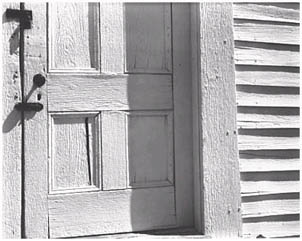
Edward Weston negative, Cole Weston print
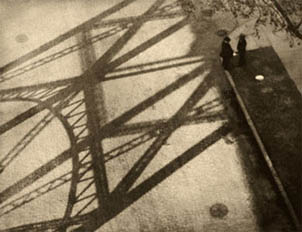
6.75 x 8.5 inch photogravure
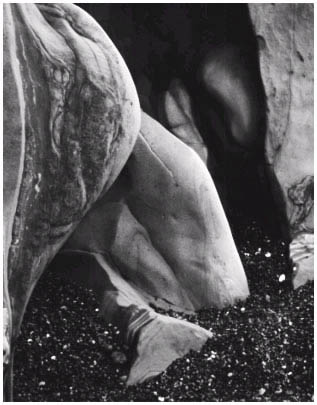
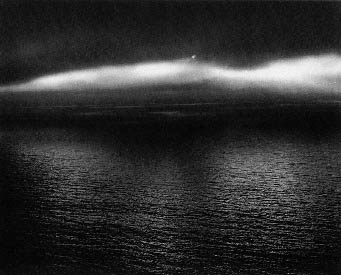
Princeton University
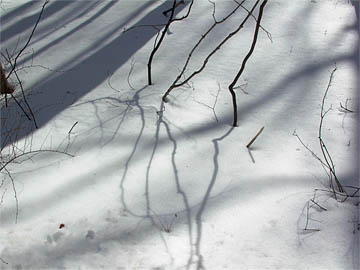
Ultra Chrome Print 11"X14"
Winter, 2005
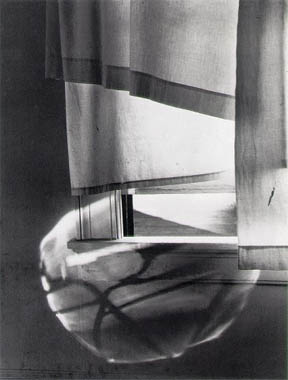
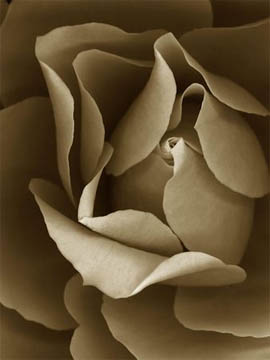
16 x 20 Chromogenic Print, 2005
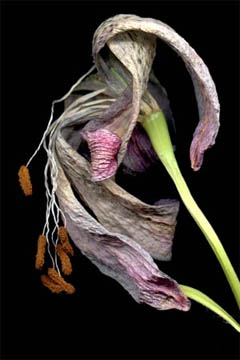
Grey Lilly #1
Diane Vetere, Toronto, Canada

Raul, school assignment...(not from me, jn)
"For my photo class I had to shoot a series of portraits
by a window using the natural light from outside. Also, I had to use a reflector
(in my case, poster board) to bounce some light onto the face. Here are the
results."
Good job Raul....